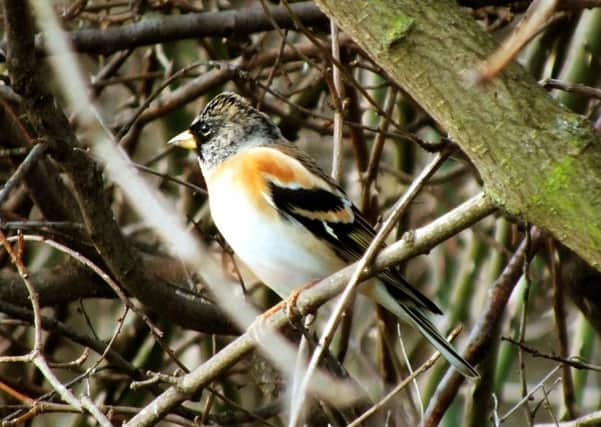Birdwatch: Rarities fly in on the winds during a week of excitement


The first bramblings of the winter, northern cousins of the chaffinch, were reported with 300 at Flamborough Head while growing numbers of redwings were coming off the sea and moving quickly inland. Ring ouzels were also seen at a number of coastal sites.
Large numbers of twitchers headed for the RSPB’s Bempton Cliffs after an Eastern crowned warbler was first seen near the visitor centre on Tuesday and was still there the following day. This is only the fourth British record, the first was at Trown Quarry, South Shields in October 2009 and another was at the edge of a golf course at Brotton, Cleveland in October 2014.
Advertisement
Hide AdAdvertisement
Hide AdAs added bonus at Bempton on Wedneday was a fly past by a black-browed albatross.
Other rarities on the coast included little buntings at Kilnsea, Easington, Scarborough and Flamborough, barred warbler and wryneck at Easington, red-breasted flycatchers at Kilnsea and Flamborough, Siberian lesser whitethroat at Filey, Siberian chiffchaff at Thornwick Bay, Raddes and Pallas’s warblers and Siberian stonechat at Flamborough, rose coloured starling at Holmpton and Richard’s pipits at Spurn and Flamborough.
Lapland and snow buntings have been reported at several coastal sites including ten Lapland buntings in a stubble field at Long Nab, Burniston.
Short eared owls were also arriving with sightings at Spurn, Flamborough Head, Bempton Cliffs and Long Nab.
Advertisement
Hide AdAdvertisement
Hide AdSightings on the sea included Sabine’s gulls off Spurn, Flamborough, Filey and Long Nab. There were also long-tailed and pomarine skuas and sooty and Balearic shearwaters. A juvenile white-winged black tern was seen off Sandsend, Whitby.
Yellow-browed warblers have continued to arrive in large numbers with Scarborough birders finding a record 32 in their area while individuals have been seen inland at Little Driffield, East Yorkshire, the Nosterfield Local Nature Reserve in North Yorkshire and North Anston, South Yorkshire.
There’s been an impressive arrival of birds from North America across Britain and in South Yorkshire the Hatfield Moors reserve continued a remarkable run of transatlantic waders with a moulting adult American golden plover, the sixth American wader seen on the reserve this year. The others were two buff breasted and two pectoral sandpipers and a Baird’s sandpiper.
A juvenile red-necked and a Slavonian grebe were both at Swillington Ings, Leeds.
Advertisement
Hide AdAdvertisement
Hide AdFlocks of siskins have been moving south with some back at garden bird feeders. Stonechats are back for the winter at lowland sites while there have been large numbers of meadow pipits leaving high ground.
Ospreys continued to be seen across Yorkshire on their way south to spend the winter in Africa and swallows and house martins have also been on the move.
The Yorkshire Wildlife Calendars for 2017, produced by Michael Flowers and costing £9.20 (incl p&p) are now available. There are 16 photographs, accompanied by more than 300 suggestions on what to see and where and when you may see it. For more information, see www.eybirdwatching.blogspot.com or contact [email protected] or 07946 625688.